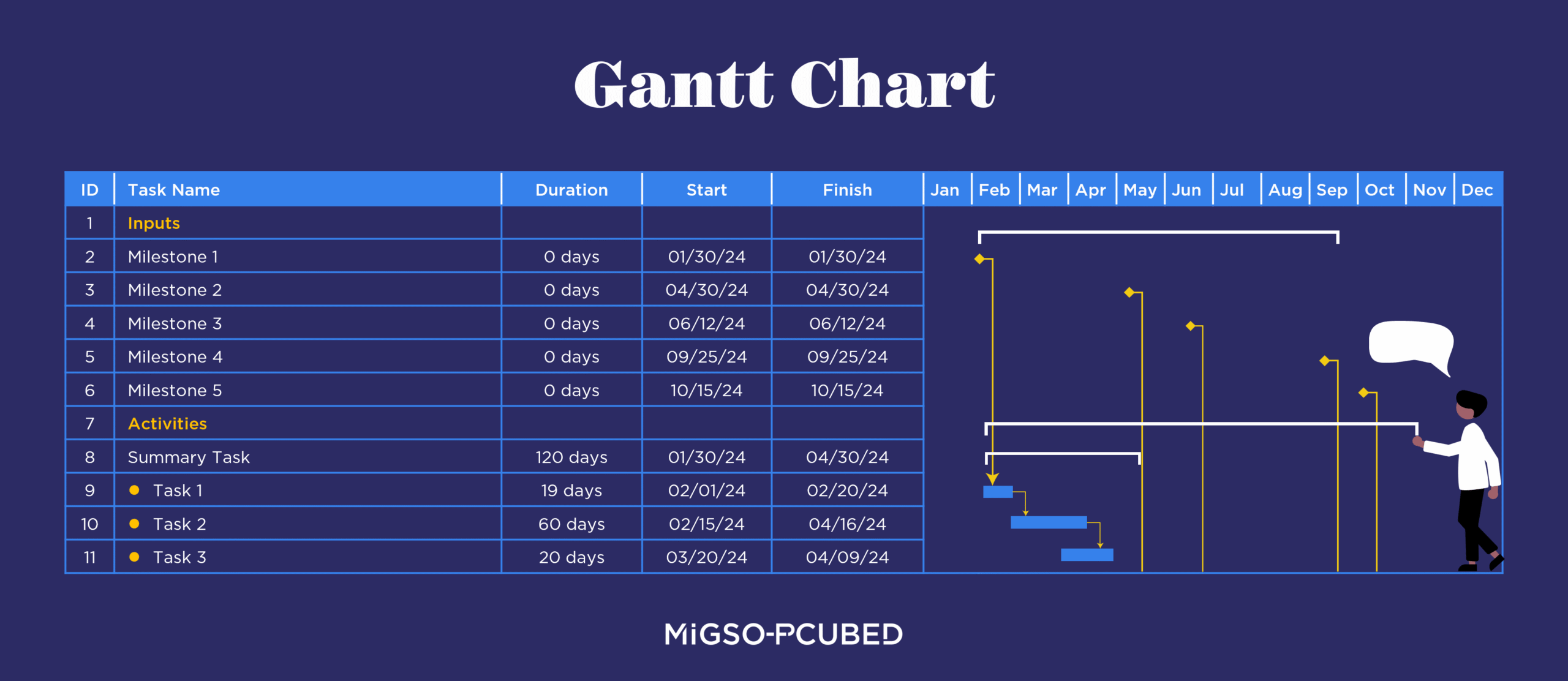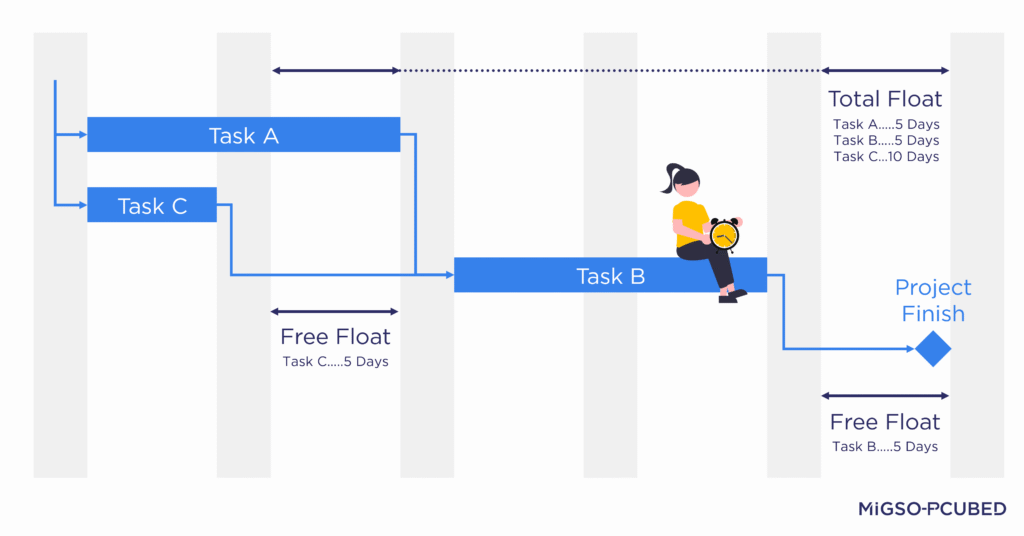Our website is not supported on this browser
The browser you are using (Internet Explorer) cannot display our content.
Please come back on a more recent browser to have the best experience possible

Guide

Time is valuable, and everyone’s life runs on a clock. Whether at home or work, we always ask ourselves, “How long will this take me? Is there any way to finish sooner?” In the project sense, how long activities take becomes an important matter of cost. That’s why schedule management is so important.
Here we explain what schedule management is and what a typical project schedule looks like. We hope this helps you get started in scheduling your own projects successfully.
Schedule Management is the process of defining project tasks and their durations, dependencies, and assigned resources in order to complete the project within a designated time frame. It also includes monitoring and reporting on the schedule to ensure the project is delivered on time.
Time is one of the three constraints in the “Iron Triangle” of Project Management, and any delay in the schedule can be very costly. Therefore, Schedule Management is crucial to ensure project success.
Schedule Management allows for (among other things):
The project schedule is a detailed plan defining how and when the project will deliver its products and services as defined by the project scope.
The schedule is closely tied to the definition of work to complete; therefore, its structure is aligned to the organization of this work, that is to say, the WBS (Work Breakdown Structure). This is a detailed plan of the tasks or activities to be carried out over the time frame of the project. This also allows for estimating the resources needed on the project and thus consolidating a budget.
The schedule consists of all the tasks, or activities, necessary to complete the project deliverables. These tasks are connected by links called dependencies. The resulting “network” of tasks then becomes the basis of scheduling analysis.
The schedule allows project managers:
Throughout the project, the schedule allows task progress to be measured against the baseline and future tasks to be re-forecasted accordingly. This way, it serves as a measure of project performance. The baseline may evolve, but only under strict conditions as it’s integrated with the approved scope and budget.
A Project Schedule can be represented in a Task Network Diagram, which maps the sequence of tasks and their dependencies. The following image depicts a typical Task Network Diagram:

More commonly, a schedule is represented in a Gantt Chart, which lists each task chronologically with each of their durations and dependencies.

Tasks (or activities) correspond to a part of the work that needs to be done. They have a beginning, an end, and a duration. Several aspects of a task must be identified: the expected result, who is responsible for it, the resources needed, and any input data necessary for its implementation.
Milestones are significant events or deliverables of the project. They have a duration of zero.
Task Relationships (sometimes called dependencies) are the links between tasks that connect them. They identify a task’s predecessors (the tasks that come first) and its successors (the tasks that follow). There are several relationship types:
Lag or Lead can be applied to each task relationship. These are offsets that can be positive (adding time) or negative (saving time). For best Schedule Management practice, it is best to limit these as much as possible and to explain each task as well as possible.

It is best to break down the predecessor task (Task A) to clarify exactly what deliverable is expected to start the successor task (Task B) on a certain date.
Constraints are limitations or restrictions imposed on the project schedule for the execution of a task. They usually take the form of imposed dates, for example, “as late as possible”.
Consider the following example:

Several important dates frame the schedule and provide important information on the project’s status:
The schedule serves as a project’s roadmap: it tells us what needs to be done and when. To develop this roadmap, the scheduler first must understand the project and its environment, including any constraints. Explore the 5 key steps to build a project schedule.
It is difficult to imagine completing a project without a substantial schedule. As an integral part of project management, however, what benefits do we truly gain from a schedule of good quality? And why is the scheduler so often misunderstood? Discover why scheduling is so important and underestimated.
A Project Scheduler (or Schedule Manager) plays a central role in the life of a project, managing each task and its duration to ensure that all deliverables are met on time. They liaise with key stakeholders to develop the schedule baseline, report on progress, and mitigate risks of delay. Learn more about their responsibilities and skillset.
To manage large and complex projects most effectively, it is important that all areas of Project Controls are integrated into a single dynamic environment. Find out why integrated planning is a crucial technique for managing projects today.
Thank you to Sébastien DESLANDES, Jeremy LESCOP, Christine ORIARD, and the MIGSO-PCUBED Scheduling Community of Practice for contributing to this article.
Choose your language
Our website is not supported on this browser
The browser you are using (Internet Explorer) cannot display our content.
Please come back on a more recent browser to have the best experience possible
